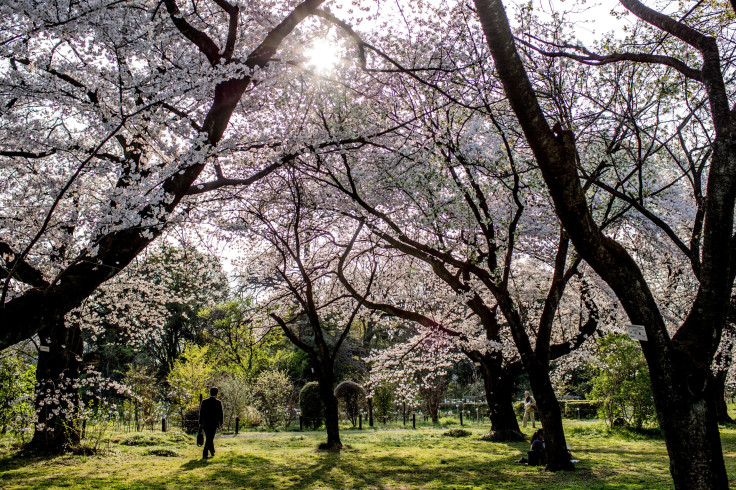Early Cherry Blossom Bloom Date A Sign Of Climate Change? Washington, DC Forecast Adjusted For Warm Winter

People looking for evidence of climate change may find their proof in pale pink blossoms in Washington, D.C. this year. The National Park Service again revised its predicted peak bloom start date — kicking off the best time to see the buds — to be March 23-24, WTOP reported Tuesday. This is slightly later than a forecast made last week but overall earlier than last year, when peak bloom started April 10.
The peak bloom date starts the annual period when 70 percent of the Yoshino cherry blossoms are fully open, according to the park service's Bloom Watch website. The earliest peak bloom day ever was March 15, 1990, and the latest was April 18, 1958. The dates are often dependent on the local weather in March, but it's an imperfect science.
“It’s really like nothing else we do, trying to predict something that so many people are counting on,” park service spokesman Mike Litterst told WTOP. More than 1.5 million people are expected to attend the 2016 National Cherry Blossom Festival, which is planned annually in advance of the predictions.
This year's festival starts Sunday and extends through April 17 in the nation's capital — and in much warmer temperatures than in 2015.
"It’s hard to imagine that last year at this point, we were still in the thick of winter," the Washington Post's Kevin Ambrose wrote recently. "The Tidal Basin was locked in ice until the middle of March and the cherry blossoms didn’t peak until April 10 — two days before the festival ended."
Cooler than forecast temps this week move the start of the peak bloom period to March 23-24. #CherryBlossoms pic.twitter.com/UiiIrd6jE3
— National Mall NPS (@NationalMallNPS) March 15, 2016
With this past winter being recently declared the hottest on record, some reports indicate the bloom date could keep creeping.
The Environmental Protection Agency's website lists the Washington peak bloom date to be an indicator of climate change, or global warming. It notes that that over the past 95 years, peak bloom dates have moved up by about five days.
A 2011 study from the University of Washington found that in one global warming scenario, the trees could bloom up to 29 days earlier by 2080. Another, less intense scenario would reduce this to 10 days, the Associated Press reported. “Our results suggest that the timing of [peak bloom] and the window of the National Cherry Blossom Festival may mismatch towards the second half of this century,” the study's authors wrote at the time.
But Jason Samenow, the Washington Post's weather editor, published a rebuttal after the study came out. He argued his analysis of the data found climate change would likely push the peak bloom date up by only five days.
The study's results don't "seem too plausible," he wrote, adding that "it would require an incredible, six-fold acceleration of the warming trend in the region, and the temperatures presently are warming at a much lower rate."
No matter what your forecast or stance on climate change is, you can watch a live stream of the trees here.
© Copyright IBTimes 2024. All rights reserved.












